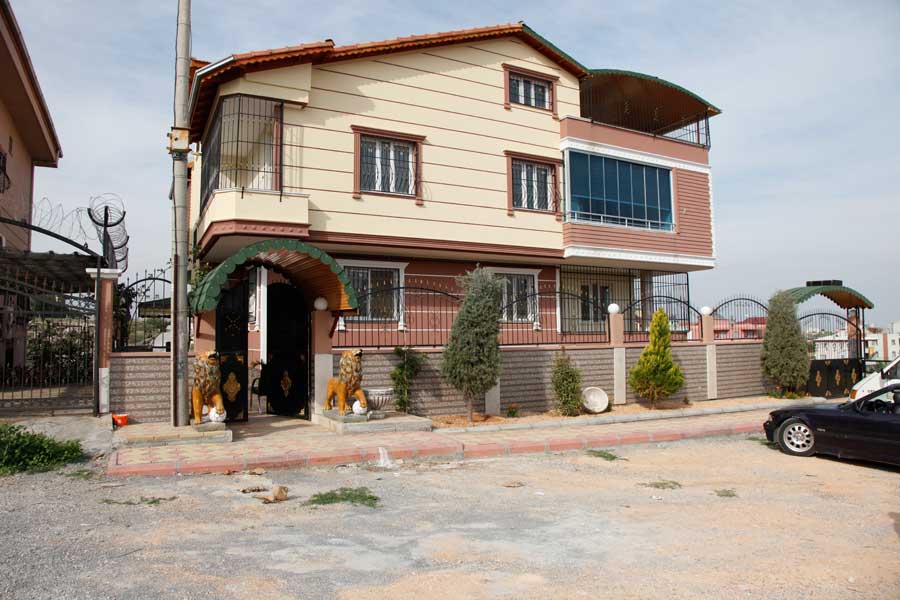Two-Faced House

The ‘two-faced’ house consists of the combination of two segments that are different in form and design. It unites German and local Turkish architectural forms in one building. Both parts are proportionally equally important in the overall design of the house and visibly demonstrate a hybrid combination of German and Turkish design elements. Of the 116 returnee houses we studied, 35 per cent were categorised as two-faced houses.
The construction of the two-faced houses show that the identity of the person who built it has shaped by both “obada” und “orada” (here and there) (see chapter four). In Germany, social experiences as a Turkish person and foreigner were often characterised by exclusion. Back in Turkey, various experiences once again lead to the feeling of exclusion, but now because the person experiences themselves as German. Colin Rowe emphasises “that a method of collage, a method in which objects must be taken or pulled out of their context, is – currently – the only way to deal with the fundamental problems of utopia and tradition” (Rowe 1997, 211). He does not view the origin of individual architectural objects as having any particular importance within the “social collage” – whether they are “aristocratic or from folk culture, academic or popular”. However, here Rowe overlooks the way homonymous, self-designed architecture constructs the identity of its builder and the biographical significance of the elements in the collage of the two-faced house. Rather, he focuses more on the process from the perspective of what has been designed. The origin of the elements in the collage of the two-faced house does in fact play a very important role.
While building materials and structures like the roof, construction elements like a garage or the existence of a cellar can clearly be traced by to German models, the frequently very large terrace area that allows the person to entertain outside, rather originates from local building tradition. A terrace on the first floor or the typical roof terrace suits the Turkish climate: furthermore, an open terrace on the top floor does not require a building permit in Turkey if it is built of wood or metal. In the summer, when it is too hot in the house, the whole family often sleeps on terraces like these. During the day, most of their time is spent in the shady large terrace on the first floor. Thus, in the two-faced house, German roof design is only built on one side and combined with the advantages of a flat roof.
The design of the house is the result of a collage of individual elements in the building, each of which follows either German or local architectural traditions. The two-faced house can be interpreted as the combination of both cultural influences.
The art and research project is funded by
